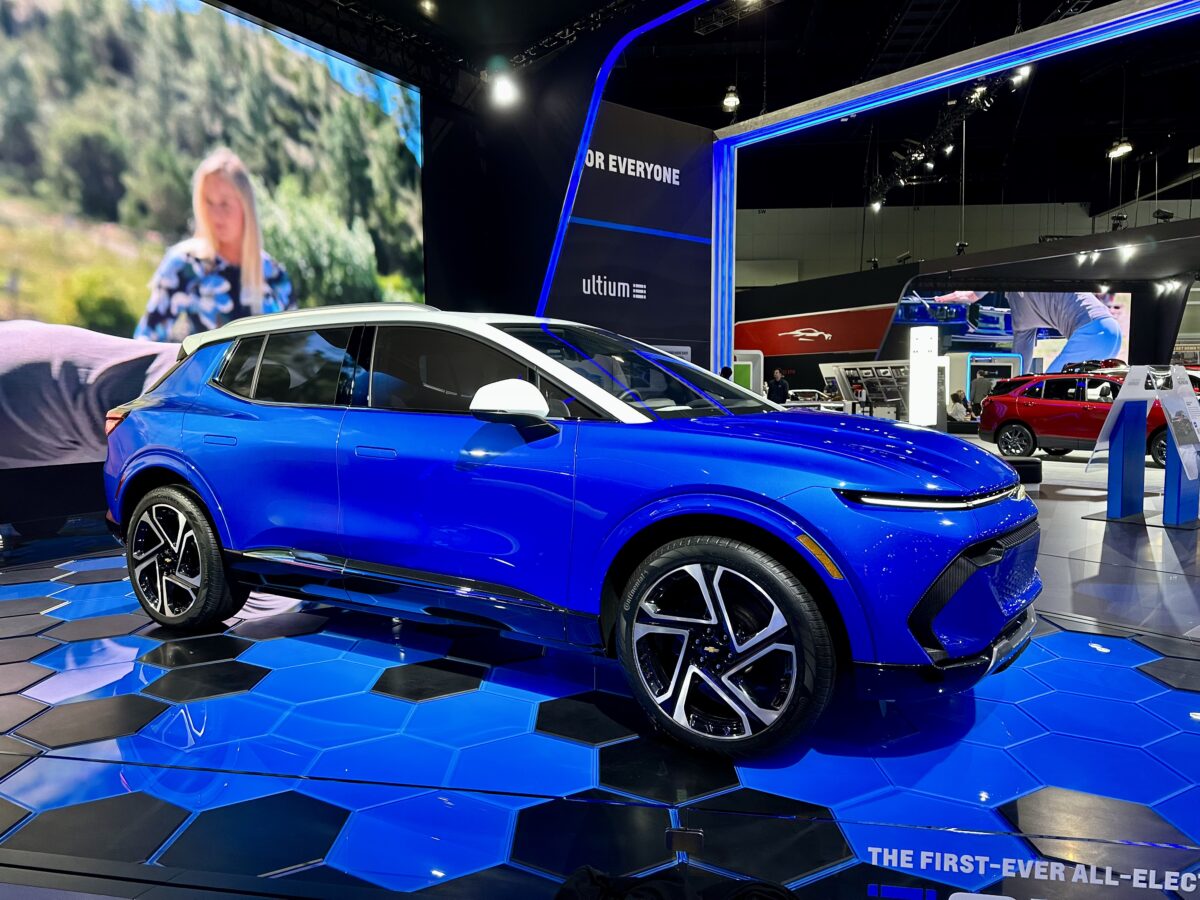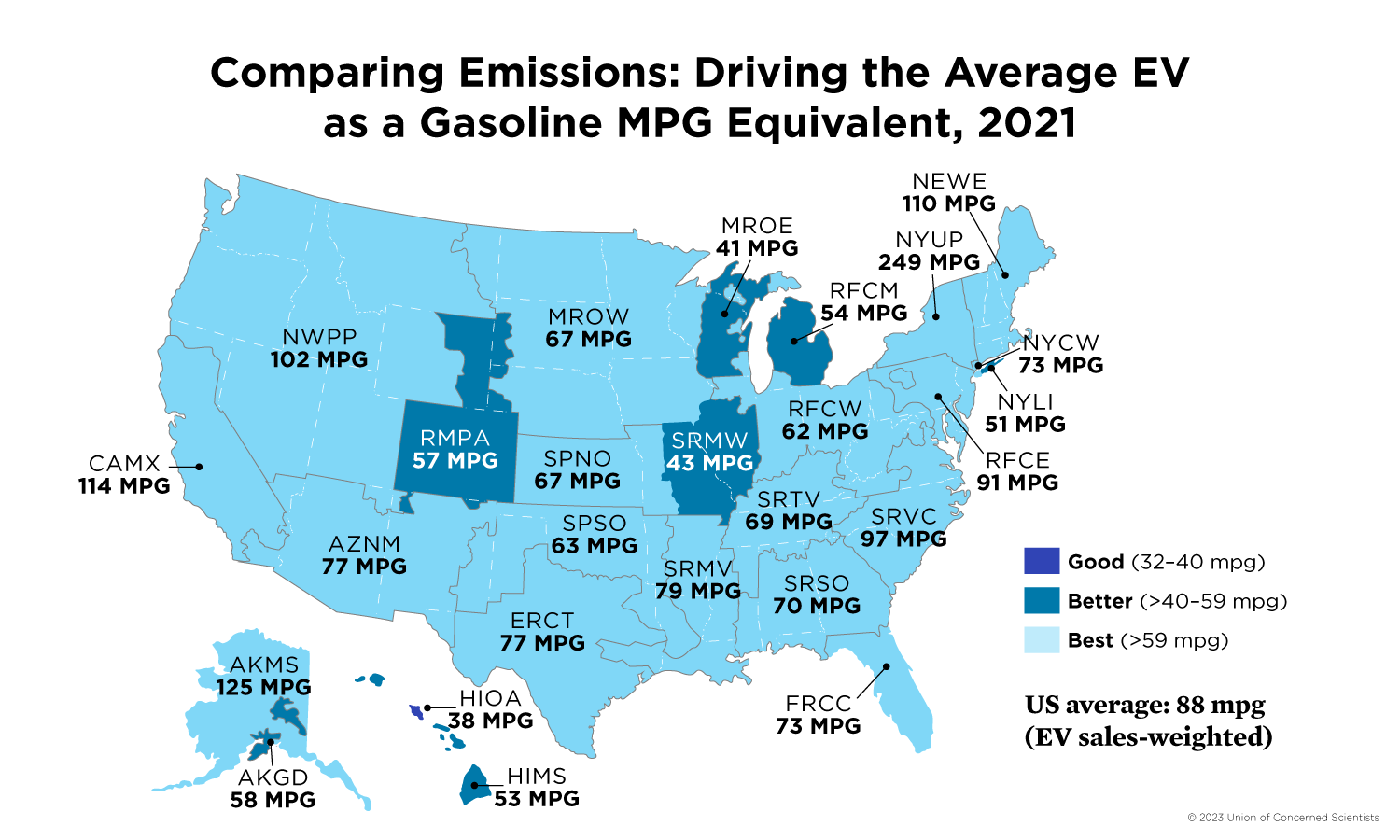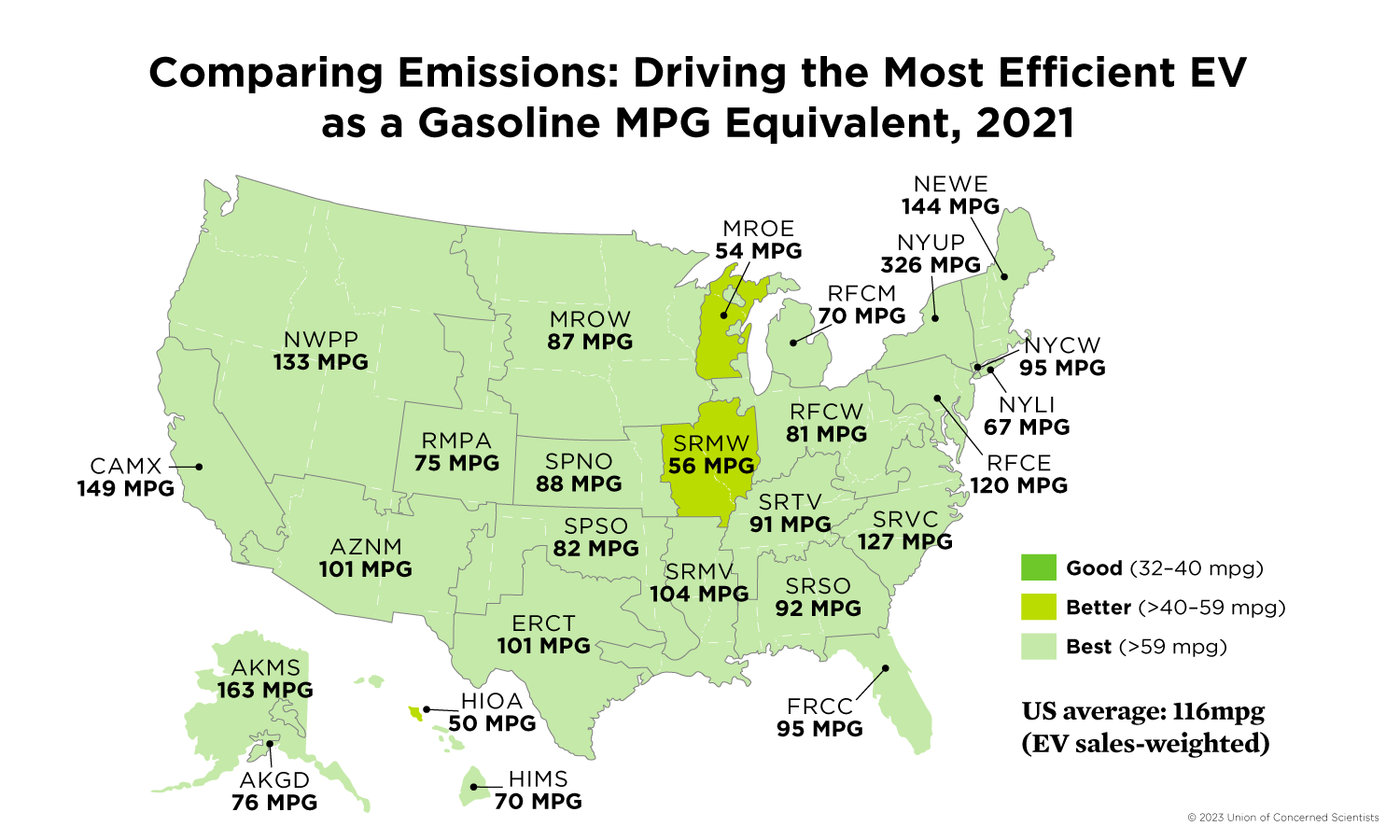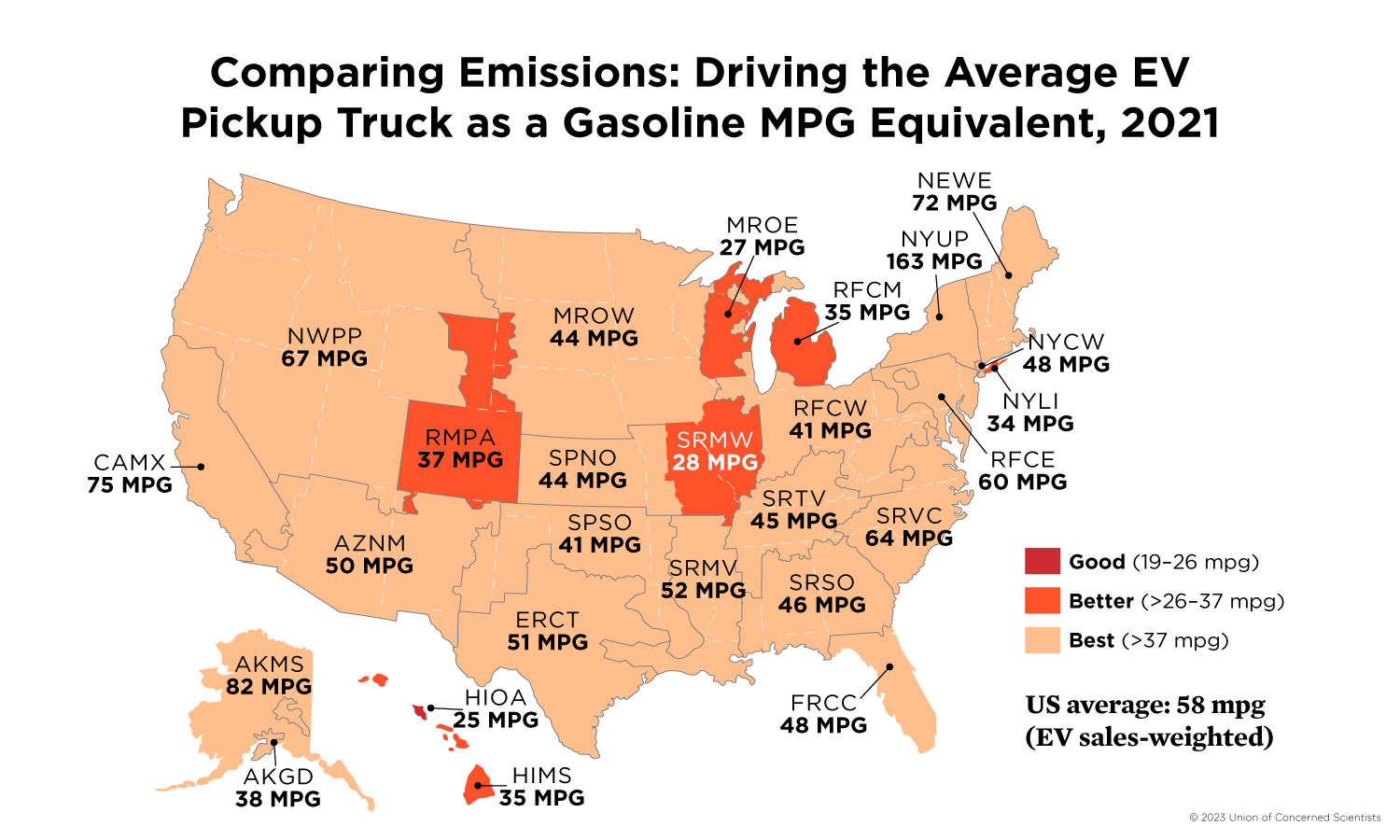Transportation is the largest source of global warming emissions in the US and the passenger vehicles many of us drive are responsible for the majority of transportation global warming emissions. Avoiding the worst impacts of climate change will require the rapid reduction in these emissions from the vehicles we drive. Electric vehicles (EVs) can eliminate tailpipe emissions altogether and are also more efficient than gasoline vehicles making EVs an important technology for reducing both global-warming and harmful air pollution from personal transportation.
In 2022, my colleagues and I analyzed the global warming emissions benefits of electric cars and trucks in our report “Driving Cleaner.” Earlier this year, the EPA released newer power plant emissions data, which I’ve used to update our assessment of the relative benefit of driving an EV as compared to the gasoline alternative.
 As new, more affordable EV models like this Chevy Equinox become available, more drivers will be able to reduce their emissions from driving. (UCS/Reichmuth)
As new, more affordable EV models like this Chevy Equinox become available, more drivers will be able to reduce their emissions from driving. (UCS/Reichmuth)Comparing EV and gasoline vehicle emissions
When we compare driving on electricity versus gasoline, we consider the global warming emissions that occur in producing and using those fuels. For a fully-electric EV, that means:
- Emissions that result from raw-material extraction, such as coal mining and natural gas drilling;
- Emissions from delivering these fuels to power plants;
- Emissions from burning those fuels in power plants to generate electricity;
- Electricity losses that occur during distribution from power plants to the point where the electric vehicle is plugged in; and
- The efficiency of the vehicle in using electricity.
Similarly, our assessment of the global warming emissions from comparable gasoline and diesel vehicles addresses emissions that result from:
- Oil extraction at the well;
- Transporting crude oil to a refinery;
- Refining oil into gasoline;
- Delivering fuel to gas stations; and
- Combusting fuel in the vehicle’s engine.
Because of differences in electricity generation across the United States, the emissions produced from driving the average EV varies depending on where the vehicle is driven. Despite this variance, driving the average EV results in lower emissions than the average new gasoline vehicle everywhere in the United States.
 Over 90 percent of people in the United State live where driving the average EV produces fewer global warming emissions than the most efficient gasoline vehicle (57 mpg). Based on where EVs have been sold in the United States, driving on electricity produces emissions equal to those of a gasoline car getting 88 miles per gallon. Note: Acronyms refer to electricity grid regions as defined by EPA’s eGRID database.
Over 90 percent of people in the United State live where driving the average EV produces fewer global warming emissions than the most efficient gasoline vehicle (57 mpg). Based on where EVs have been sold in the United States, driving on electricity produces emissions equal to those of a gasoline car getting 88 miles per gallon. Note: Acronyms refer to electricity grid regions as defined by EPA’s eGRID database.Driving a more efficient EV maximizes the benefits
While using the average efficiency EV has clear climate benefits compared to gasoline-powered vehicles, emission reductions are maximized by choosing the most efficient EVs available. Vehicles like the Lucid Air and Tesla Model 3 require the least amount of electricity per mile because of their more efficient powertrains and low aerodynamic drag design. A high-efficiency design also means that a smaller capacity and therefore lighter battery pack can be used to achieve the desired driving range, further reducing the energy required to move the car. These most-efficient EVs have lower driving emissions than every gasoline model for 97% of people in the country. In many parts of the US, including the entire West Coast and New England, driving one of these EVs means global warming emissions are less than a quarter of the average gasoline vehicle.
 Choosing the most-efficient EV minimizes emissions from driving. For example, drivers of the most efficient EV in New England will produce global warming emission equal to a hypothetical 144 MPG gasoline-powered car.
Choosing the most-efficient EV minimizes emissions from driving. For example, drivers of the most efficient EV in New England will produce global warming emission equal to a hypothetical 144 MPG gasoline-powered car.Electrifying larger vehicles like pickups can also reduce emissions
Larger EVs are now available, including an electric version of the Ford F-150 pickup truck, the best-selling vehicle in the US. Larger vehicles, whether gasoline or electric-powered, are less efficient than the average car. However, switching from gasoline to electricity still has an advantage. Everywhere in the United States, the emissions from driving an EV pickup truck are lower than those for the average new gasoline or diesel pickup truck.
Switching from a gasoline truck to an EV truck has clear benefits and is a good choice for drivers that need the hauling or towing ability of these vehicles. However, moving from an efficient gasoline car to a large EV like a pickup truck can reduce the climate benefits of electrification. To reduce emissions, drivers should choose EVs over gasoline vehicles when possible. But regardless of the fuel, car buyers should choose more efficient models that meet their mobility needs, both to reduce emissions from driving and to save on fuel costs. Simply put, electrification shouldn’t be seen as justification to drive a Hummer.
 Driving an electric pickup truck produces lower emissions than the most efficient gasoline model in most of the United States. For example, recharging and driving the Rivian R1T or Ford F-150 Lightning pickup in New England has the emissions impact of a hypothetical 72 mpg gasoline truck. Overall, based on where EVs have been sold, EV pickups on average would have emissions equal to a 58 mpg gasoline truck, significantly better than gasoline trucks.
Driving an electric pickup truck produces lower emissions than the most efficient gasoline model in most of the United States. For example, recharging and driving the Rivian R1T or Ford F-150 Lightning pickup in New England has the emissions impact of a hypothetical 72 mpg gasoline truck. Overall, based on where EVs have been sold, EV pickups on average would have emissions equal to a 58 mpg gasoline truck, significantly better than gasoline trucks. Avoiding driving altogether is even better than driving an EV
Choosing to drive an EV (especially a more efficient one) instead of a gasoline car will help reduce carbon pollution that is a major cause of climate change. And this choice to drive using electricity is now significantly cleaner than when we first looked at the benefits of EVs. However, avoiding driving is even better. Using mass transit instead of a personal vehicle can reduce emissions. And walking and biking means avoiding air pollution and climate-changing emissions altogether. With our current transportation system, it’s difficult for many people to switch all of their trips to transit, walking, or biking, but using these modes even part of the time can make a positive difference in the pollution from personal transportation.

 1 year ago
54
1 year ago
54


